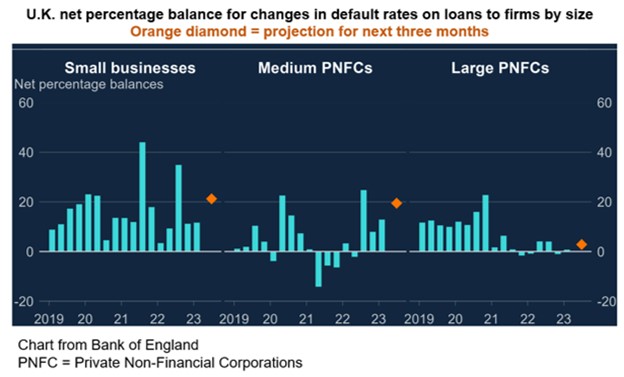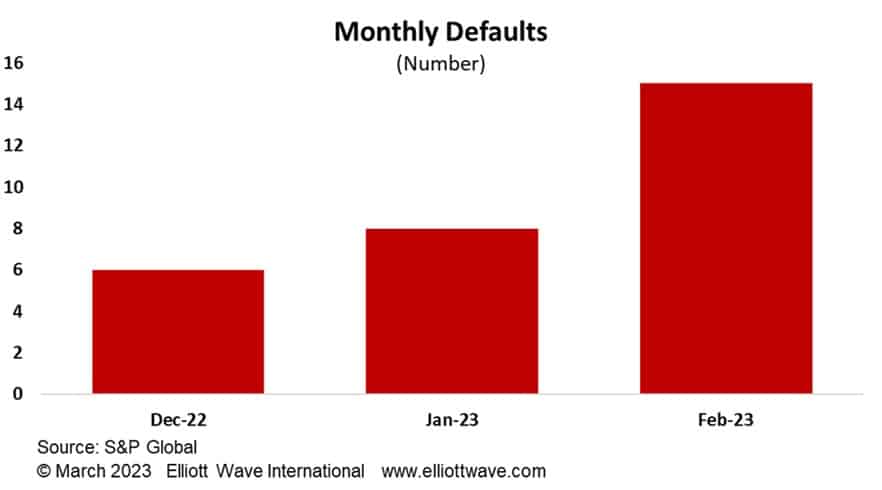Debt Defaults Rising in U.K.
Yet more evidence that the credit crunch is underway.
The latest Bank of England Credit Conditions Survey was published the other day and provided a grim reading. It showed that banks and building societies (savings institutions) expect the supply of secured lending to plummet over the next three months whilst demand, particularly for remortgaging property, will rise.
Most worrying, perhaps, is that default rates are expected to rise sharply. The chart below shows that business loan defaults are expected to increase over the next quarter. The expectations for household loan defaults are even starker, with sentiment amongst lending institutions harking back to the days of 2008 and the Great Financial Crisis.
The FTSE 250 index, a broad barometer of U.K. business, peaked in September 2021 and declined into an October 2022 low. After a three-wave bounce retracing 50% of the decline, the index has now turned down again. This is a clear indication that the negative trend in U.K. social mood is continuing and could be set to intensify this year.


